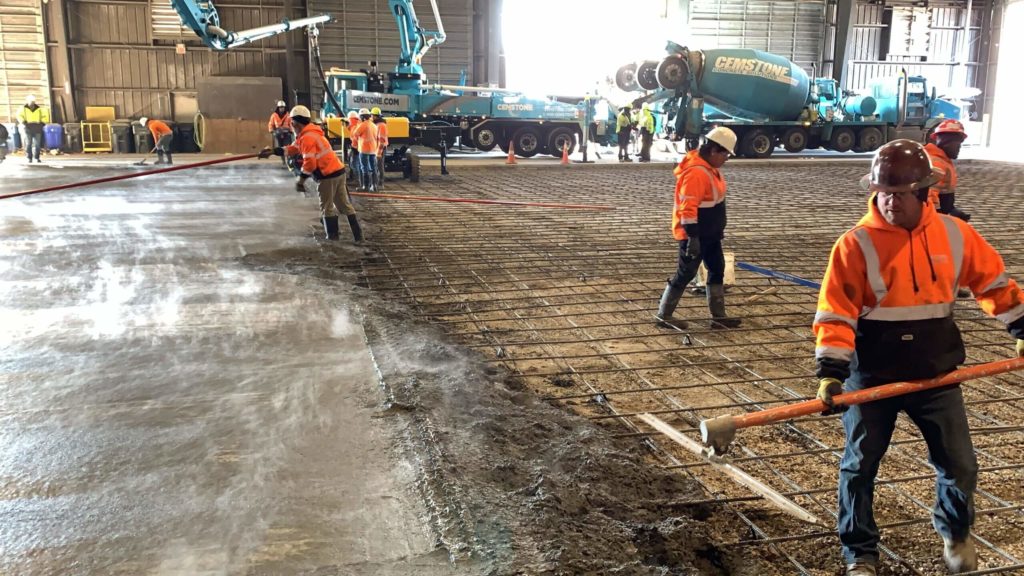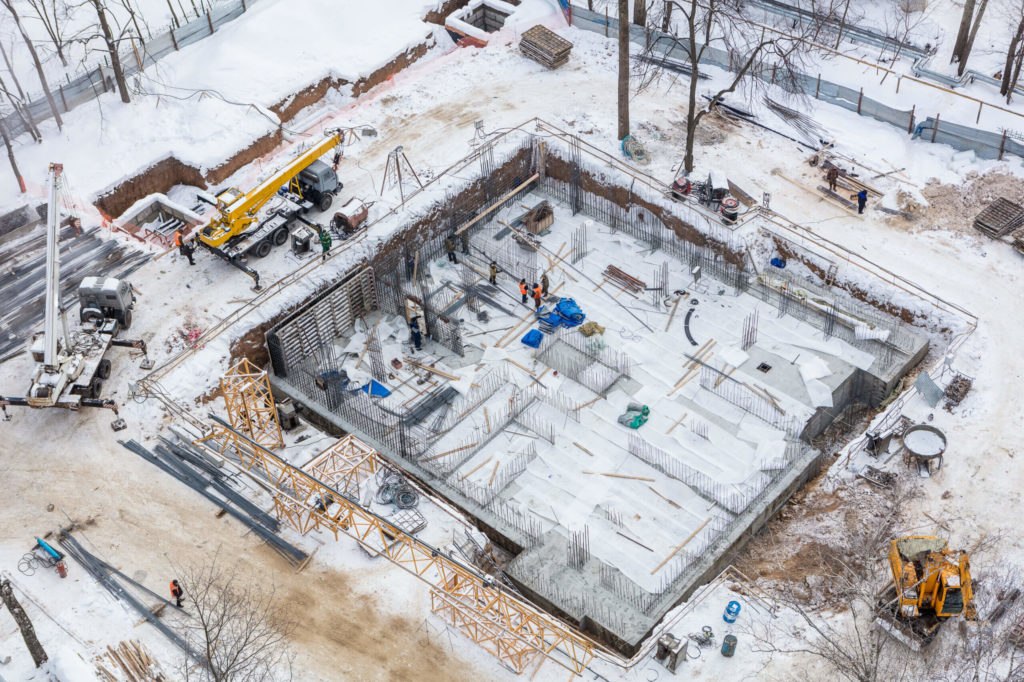
Contrary to popular belief, there is construction in the winter.
We’ve written about how it’s possible before, but what we didn’t go into is what kinds of costs are associated with working construction in the wintertime. Customers should be aware of this because it’s common throughout the whole industry: when the weather gets cold, the costs go up.
What contributes to the rise in construction costs in winter?
There are a few factors that go into what we have to do to prepare a job site in winter that we simply don’t have to do in the summertime or the early fall.
Site Clearing: Snow
Rain is one thing, but snow is a completely different beast altogether (even though it’s all just water) because, I don’t know if you’ve noticed this, snow tends to stick around longer than a rainfall.
Snow is a key contributor to why winter construction is more expensive. In a rainfall situation, we just need the rain to stop and the site to dry up reasonably before we can get back to work. With snow? We have to actually clear the site manually using our shovels, front end loaders, skid steers and dump trucks.
Depending on the size of the job site, that can be really time consuming. Which increases the costs of labor.

Site Preparation: Ground Heating
In addition to the precipitation, construction companies have to prepare the site properly by heating the ground using either blankets or a portable hydronic heating system. Goodmanson Construction has both of those.
But why do we have to do that? Can’t we just put the concrete straight on the ground?
The answer is no because of the process of curing concrete that has to happen. Concrete has to cure properly. You might think concrete is a tough material so there’s a lot of room for error, but that’s not true. Concrete is tough, but it only reaches its intended strength for its application through proper curing.
Here’s what the Portland Cement Association has to say about proper concrete curing:
“Curing of concrete is defined as providing adequate moisture, temperature, and time to allow the concrete to achieve the desired properties for its intended use.
This would mean maintaining a relative humidity in the concrete of greater than 80 percent, a temperature greater than 50 degrees Fahrenheit, and for a time typically ranging from three to 14 days depending on the specific application.
When these recommendations are properly specified and performed in the field, the final properties of the concrete mixture will be achieved.”
PCA “The Difference Between Curing and Drying Concrete”
Concrete needs a temperature greater than 50 degrees in order to properly cure. You can’t achieve that in winter without the use of ambient heating, concrete additives and other measures.
If we don’t take these measures, the concrete won’t cure properly and it won’t perform as well over time. While the added time and cost might be an inconvenience now, taking the proper amount of time during installation will ensure you don’t have to pay for costly repairs down the road.

Should You Consider Winter Construction?
This is a frequent question, but it really depends on the project. If you have a tight deadline and construction needs to start as soon as possible, then yes, winter construction is definitely worth pursuing. Sure, it might take a little longer and could cost more, but with a quality contractor like Goodmanson, it will be worth it.
Another consideration is the availability of contractors. Given the increased demand of construction in the summer, it can be advantageous to consider winter construction if you want to get your project rolling.
Choosing the Right Contractor for Your Construction
Regardless of when you choose to start your construction, finding a quality contractor will make all the difference for the project and of course the final product. If you happen to be looking for a trusted contractor in Minnesota, contact our team at Goodmanson. We would love to help you with your construction!

